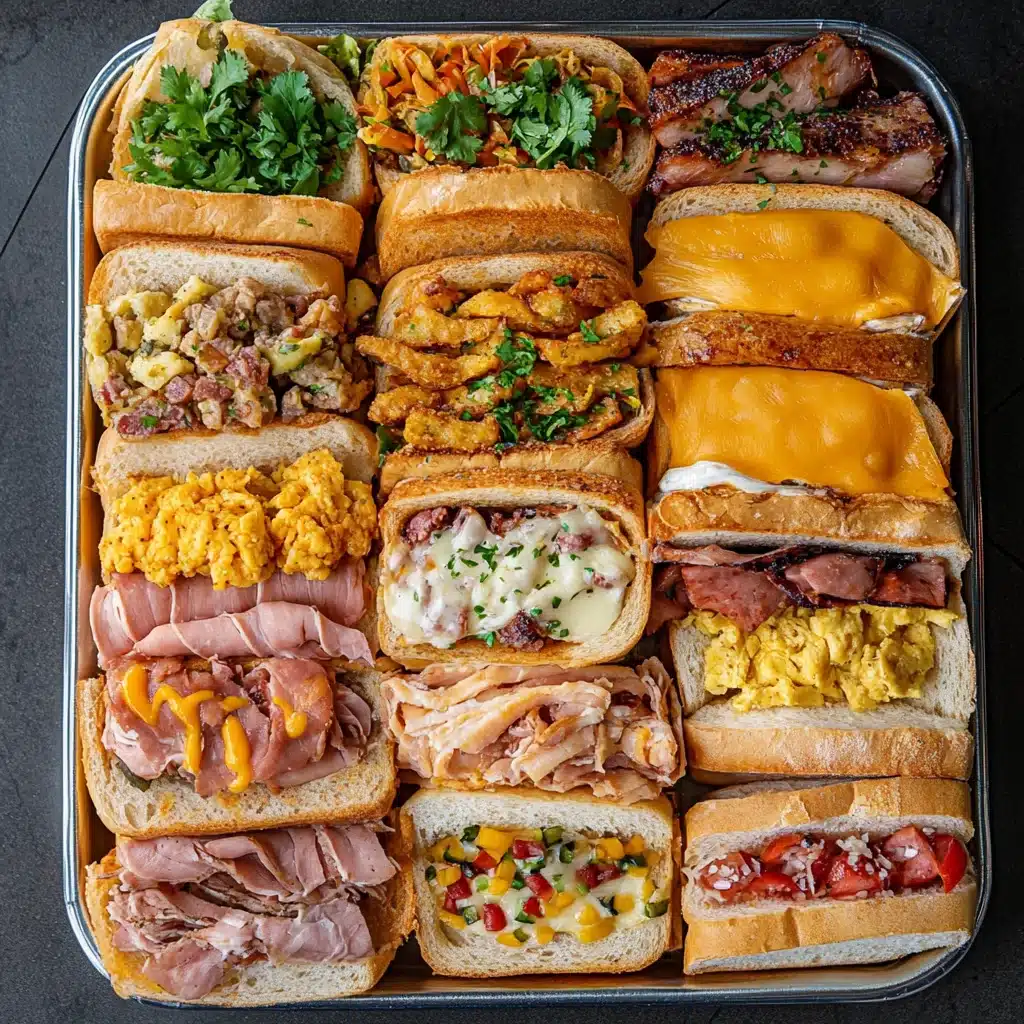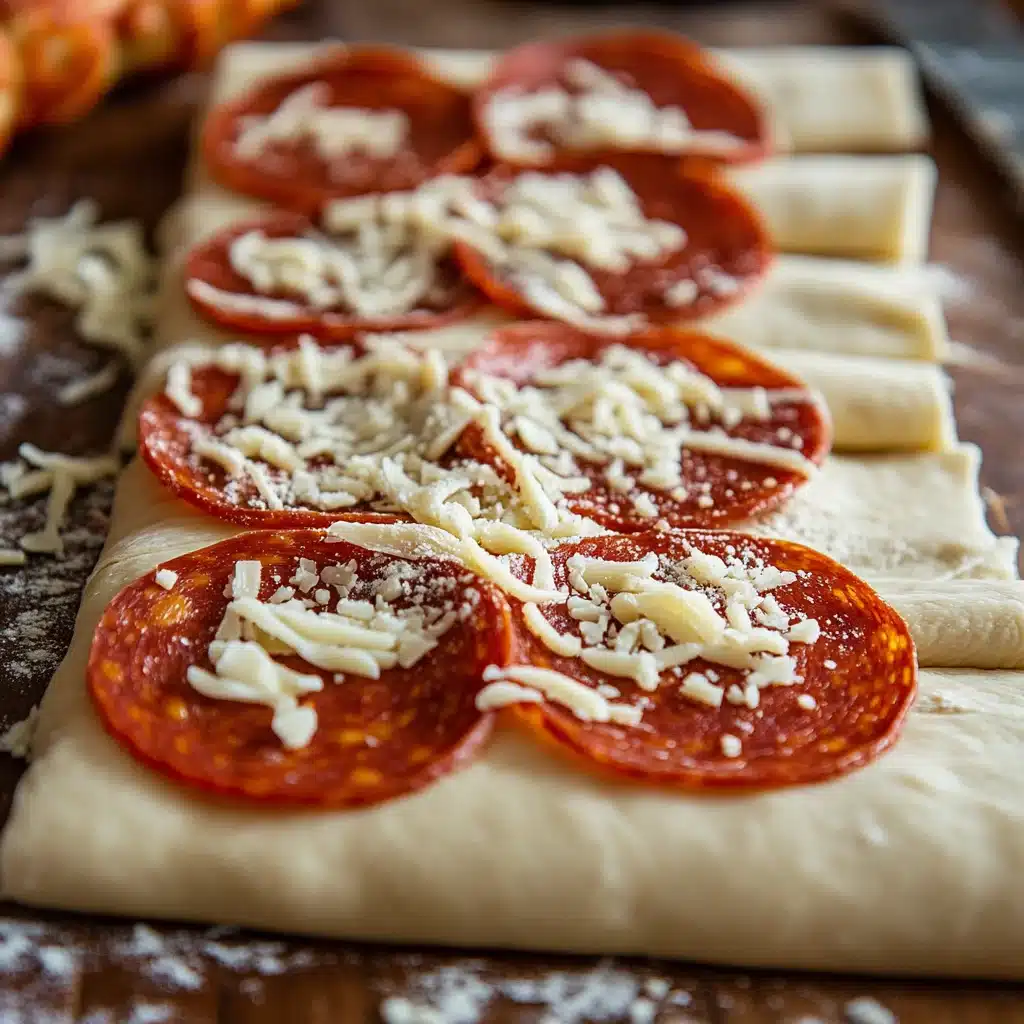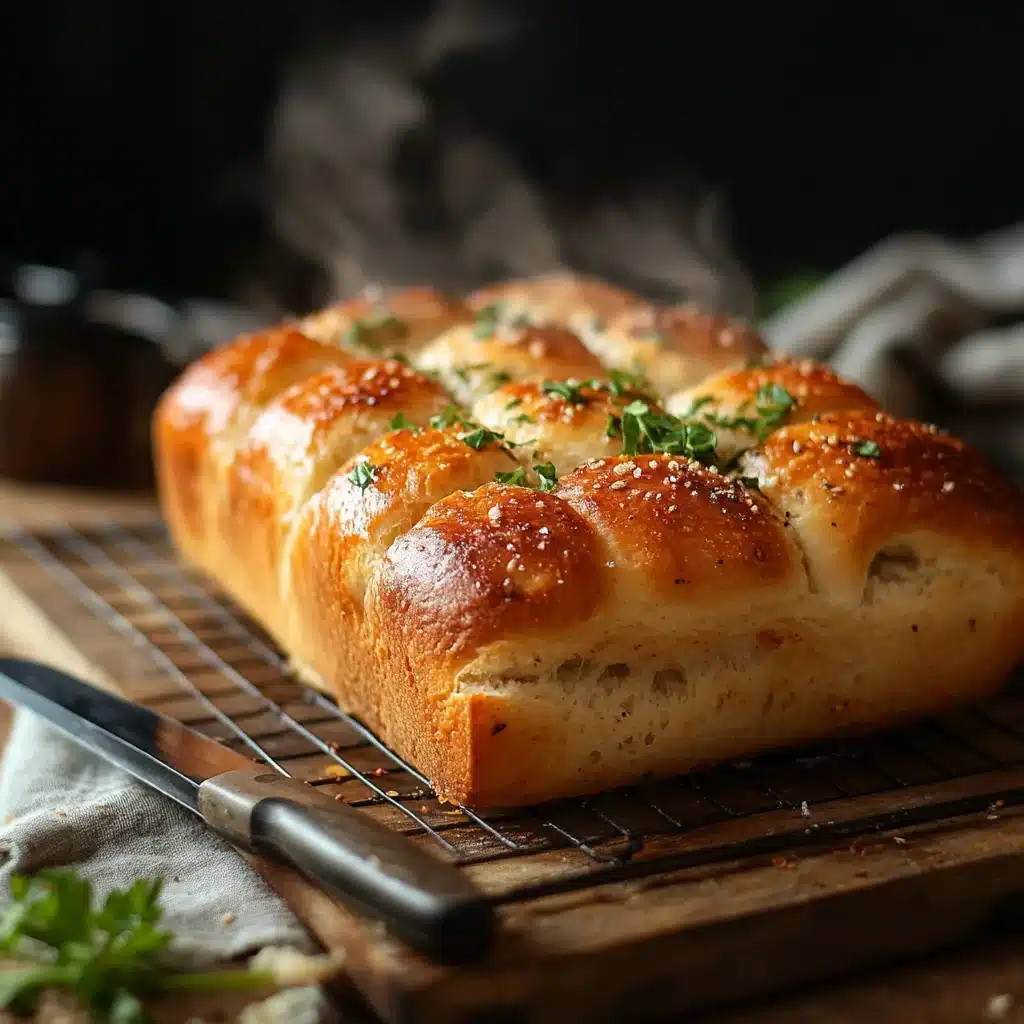If you’re a fan of quick, hearty meals that can feed a crowd and use up leftovers, you’re going to love garbage bread. As someone who enjoys experimenting in the kitchen, I’ve found garbage bread to be the perfect canvas for creativity. Whether it’s packed with savory meats, gooey cheese, or even dessert fillings, it’s endlessly adaptable and always delicious. In this article, I’ll guide you step-by-step on how to make garbage bread, explore its origins, and share expert tips to ensure you bake it perfectly every time.
Table of Contents
What is Garbage Bread?
What Makes It Unique?
Garbage bread is a delightful culinary invention that combines the simplicity of bread dough with a medley of savory (or sweet) fillings. The term “garbage” refers to the idea of throwing in a mix of leftovers or your favorite ingredients, creating a dish that’s not only tasty but also minimizes food waste. The result? A warm, comforting bread roll stuffed with flavors in every bite.
A Brief History of Garbage Bread
While the exact origins of garbage bread are unclear, it’s often attributed to American home cooks looking for ways to stretch their ingredients and reduce kitchen waste. This innovative meal gained popularity for its versatility, appealing to both busy families and adventurous eaters. Whether you’re making it for a casual family dinner or a game-day snack, garbage bread has become a beloved staple in many households.
Ingredients for Garbage Bread Recipe
Basic Dough Ingredients
The foundation of any great garbage bread starts with the dough. While you can use store-bought pizza or crescent dough for convenience, making your own dough from scratch elevates the recipe. Here’s what you’ll need for a basic dough:
- Flour (3 cups): All-purpose flour works best for this recipe.
- Warm Water (1 cup): Activates the yeast and helps form the dough.
- Active Dry Yeast (2 ¼ teaspoons): Ensures a fluffy and airy texture.
- Sugar (1 tablespoon): Feeds the yeast for proper rising.
- Salt (1 teaspoon): Balances the flavors.
- Olive Oil (2 tablespoons): Keeps the dough soft and pliable.
Pro Tip: If you’re short on time, pre-made doughs are great alternatives. Just ensure they’re rolled out thinly to avoid a dough-heavy bread.
Popular Fillings and Variations
The beauty of garbage bread lies in its fillings. You can tailor it to suit your cravings or use up leftovers in your fridge. Below are some crowd-pleasing options:

Classic Fillings:
- Cooked ground beef, shredded chicken, or pepperoni slices.
- Mozzarella cheese, cheddar, or a blend of cheeses.
- Sautéed vegetables like bell peppers, onions, or mushrooms.
Creative Variations:
- Breakfast Style: Scrambled eggs, bacon, and hash browns.
- Vegetarian: Spinach, feta, and roasted tomatoes.
- Sweet Treat: Cinnamon, brown sugar, and cream cheese.
Don’t be afraid to get creative! Mixing and matching ingredients can lead to surprising and delicious combinations.
Print
Garbage Bread Recipe
- Total Time: 50 minutes
- Yield: 8 slices 1x
Description
Learn how to make the ultimate garbage bread with step-by-step instructions, creative filling ideas, and expert baking tips.
Ingredients
- 3 cups all-purpose flour
- 1 cup warm water
- 2 ¼ teaspoons active dry yeast
- 1 tablespoon sugar
- 1 teaspoon salt
- 2 tablespoons olive oil
- Fillings: cheese, meats, vegetables, or sweet options
Instructions
- Prepare the dough by mixing flour, yeast, warm water, sugar, salt, and olive oil. Knead the dough for 8-10 minutes, then let it rise for 1-2 hours.
- Roll the dough into a rectangle, layer your fillings, and roll it into a log.
- Bake at 375°F for 25-30 minutes until golden brown.
- Let the bread cool before slicing and serving.
NB : Use parchment paper for easier cleanup and avoid overfilling the dough to prevent leaks
Notes
- Lower Calorie Option:
- Use low-fat cheese and lean meats like turkey or chicken.
- Substitute half of the all-purpose flour with whole wheat flour for added fiber.
- Vegetarian Option:
- Skip the meat and load up on vegetables like spinach, mushrooms, and bell peppers.
- Swap regular cheese for low-fat or plant-based alternatives.
- Low-Sodium Option:
- Use reduced-sodium cheese and avoid overly salty fillings like pepperoni.
- Prep Time: 20 minutes
- Cook Time: 30 minutes
- Category: Main Dish, Appetizer, Snack
- Method: Baking
- Cuisine: American
Nutrition
- Serving Size: 1 slice
- Calories: 350 kcal
- Sugar: 3 g
- Sodium: 680 mg
- Fat: 15 g
- Saturated Fat: 7 g
- Carbohydrates: 32 g
- Fiber: 2 g
- Protein: 17 g
- Cholesterol: 40 mg
Keywords: garbage bread recipe, stuffed bread, easy bread recipe
How to Make Garbage Bread (Step-by-Step)
Making garbage bread is easier than you might think, and the results are always worth the effort. Here’s a step-by-step guide to ensure your bread turns out perfect every time.

Step 1: Preparing the Dough
If you’re making dough from scratch:
- Activate the Yeast: In a small bowl, mix warm water, sugar, and yeast. Let it sit for 5-10 minutes until frothy.
- Mix the Dough: In a large bowl, combine the flour and salt. Add the activated yeast mixture and olive oil. Mix until a rough dough forms.
- Knead the Dough: Transfer the dough to a floured surface and knead for 8-10 minutes until it becomes smooth and elastic.
- Let It Rise: Place the dough in an oiled bowl, cover with a damp cloth, and let it rise in a warm place for 1-2 hours or until doubled in size.
If you’re using store-bought dough:
- Allow the dough to come to room temperature for about 30 minutes before rolling it out.
Step 2: Preparing the Fillings
- Cook or Sauté Ingredients: If your fillings include raw meat or vegetables, cook them in advance and let them cool.
- Shred Cheese: Grate your preferred cheese for even melting.
- Layer the Ingredients: Have all your fillings ready for easy assembly.
Step 3: Rolling and Assembling
- Roll the Dough: Roll out the dough into a rectangle, about ¼ inch thick.
- Layer the Fillings: Spread your chosen fillings evenly, leaving about an inch border on all sides.
- Seal the Roll: Starting from one end, roll the dough tightly into a log. Pinch the edges to seal it completely.
Step 4: Baking Instructions
- Preheat the Oven: Set the oven to 375°F (190°C).
- Prepare the Pan: Place the rolled dough seam-side down on a parchment-lined baking sheet.
- Bake: Bake for 25-30 minutes or until golden brown.
- Cool and Slice: Allow it to cool for 5-10 minutes before slicing and serving.
What Temperature Do You Cook Garbage Bread At?
Getting the temperature right is essential for baking garbage bread to perfection. A well-baked garbage bread will have a golden, crispy crust and perfectly cooked fillings. Let’s dive into the specifics.
The Perfect Baking Temperature
The ideal oven temperature for garbage bread is 375°F (190°C). This moderate heat ensures the dough bakes evenly without burning the outside or leaving the inside undercooked.
- Preheating the Oven: Always preheat your oven for at least 10-15 minutes before baking to maintain consistent heat.
- Using a Baking Sheet or Stone: For an extra crispy crust, bake your garbage bread on a preheated pizza stone. Otherwise, a parchment-lined baking sheet works perfectly.
Tips for Adjusting Temperature Based on Fillings
Some fillings, especially raw vegetables or proteins, may require slight adjustments:
- For Raw Ingredients: If your fillings include raw meat or veggies, increase the baking time by 5-10 minutes to ensure they’re fully cooked.
- For Pre-Cooked Ingredients: Stick to the 375°F temperature and standard baking time (25-30 minutes).
Common Mistakes to Avoid
- Overcooking the Bread: Baking garbage bread at temperatures higher than 375°F can result in a burnt crust while leaving the inside doughy.
- Underbaking: If your bread looks pale after 30 minutes, give it an additional 5 minutes, checking frequently to avoid overcooking.
- Crowding the Oven: Avoid placing multiple loaves too close together, as this can hinder even baking.
Using a kitchen thermometer to check that the internal temperature of the bread reaches 190-200°F ensures the dough is fully baked.
Delicious Filling Ideas for Garbage Bread
One of the best things about garbage bread is its versatility. You can fill it with just about anything, from savory to sweet, to match your cravings or use up leftovers. Here are some filling ideas to inspire your next garbage bread creation.
Classic Savory Fillings
- Meat Lovers: Ground beef, pepperoni, sausage, or shredded chicken paired with mozzarella or cheddar cheese. Add marinara or barbecue sauce for extra flavor.
- Cheese Explosion: Mix different cheeses like mozzarella, cheddar, Parmesan, and provolone for a gooey, melty interior.
- Veggie Delight: Sautéed spinach, mushrooms, bell peppers, and onions combined with feta or goat cheese.
Creative Twists on Garbage Bread
- Breakfast Garbage Bread: Stuff it with scrambled eggs, crumbled bacon, shredded cheese, and hash browns. Serve with a side of salsa for a morning treat.
- Buffalo Chicken: Shredded chicken tossed in buffalo sauce with blue cheese crumbles or ranch dressing.
- Taco-Inspired: Ground beef, taco seasoning, black beans, corn, and shredded Mexican cheese blend. Serve with guacamole or sour cream.
Sweet Dessert Fillings
- Cinnamon Roll Style: A mix of cinnamon, brown sugar, and cream cheese. Add a drizzle of icing for a dessert-like finish.
- Nutella and Banana: Spread Nutella, add thin banana slices, and sprinkle with crushed nuts for a decadent dessert.
- Apple Pie Garbage Bread: Diced apples, sugar, and cinnamon, wrapped in dough for a quick take on apple pie.
Tips for Balancing Flavors
- Layer Ingredients Strategically: Place heavier ingredients like meat at the bottom and lighter ones like cheese or veggies on top.
- Seasoning is Key: Use salt, pepper, or spice blends to enhance the flavor of your fillings.
- Don’t Overstuff: Avoid overloading the dough, as it can cause it to tear or bake unevenly.
How Long Do You Cook Stuffed Bread For?
The cooking time for garbage bread is a critical factor in achieving the perfect balance of a golden crust and fully cooked fillings. While the standard baking time works for most recipes, certain variations in fillings and dough thickness may require adjustments.

Standard Cooking Time
The average time to bake garbage bread at 375°F (190°C) is 25-30 minutes. During this time, the dough becomes golden brown, and the fillings heat through evenly.
- Thinner Dough: If your dough is rolled out thinner than ¼ inch, it might only need 20-25 minutes.
- Thicker Dough: A thicker dough layer or a bread that’s packed with fillings may need up to 35 minutes.
Adjusting Time for Fillings
- Pre-Cooked Ingredients: Fillings like cooked ground beef, sautéed vegetables, or pre-shredded chicken require minimal additional cooking time. Stick to the standard 25-30 minutes.
- Raw Ingredients: If using raw proteins (like diced chicken or bacon) or vegetables, ensure they are cooked through by extending the baking time to 35-40 minutes.
- Cheese-Heavy Fillings: Cheesy garbage bread often requires 30-35 minutes to ensure the cheese melts completely without leaking out too much.
How to Know It’s Done
- Golden Brown Crust: The surface of the bread should have a uniform golden-brown color.
- Internal Temperature: Use a food thermometer to check the bread’s internal temperature. It should reach 190-200°F (88-93°C) for fully baked dough.
- Tap Test: Lightly tap the bread; it should sound hollow if it’s fully cooked.
Avoiding Overbaking
Keep an eye on the bread in the final 5 minutes of baking. Overbaking can result in a dry crust and burnt edges, especially for thin dough.
Can You Freeze Garbage Bread?
Freezing garbage bread is an excellent way to enjoy this delicious recipe anytime. Whether you’re meal-prepping or saving leftovers, freezing helps retain its flavor and texture when done correctly. Here’s a detailed guide on how to freeze and reheat garbage bread without compromising its quality.
How to Freeze Garbage Bread
- Before Baking:
- Prepare and assemble the garbage bread as per the recipe.
- Do not bake it yet. Instead, place the assembled loaf on a parchment-lined baking sheet and freeze until solid (about 2-3 hours).
- Once frozen, wrap it tightly in plastic wrap and then aluminum foil to prevent freezer burn.
- Label the package with the date and filling type. It can be frozen for up to 3 months.
- After Baking:
- Allow the baked garbage bread to cool completely.
- Slice the bread into individual portions for easier reheating.
- Wrap each slice in plastic wrap and place them in a freezer-safe bag or container.
Reheating Frozen Garbage Bread
- For Unbaked Bread:
- Remove the frozen bread from the freezer and let it thaw in the refrigerator overnight.
- Bake as directed, adding an extra 5-10 minutes to the baking time to ensure it’s fully cooked.
- For Baked Bread:
- Reheat individual slices directly from the freezer. Place them on a baking sheet and warm in a 350°F (175°C) oven for about 10-15 minutes.
- Alternatively, use a microwave at low power for a quick reheat, though the crust may not remain as crispy.
Pro Tips for Freezing Garbage Bread
- Avoid Freezing Raw Vegetables: They may release excess water and make the bread soggy.
- Double Wrapping is Key: Ensures the bread stays fresh and avoids freezer odors.
- Portion Control: Freezing in slices makes reheating more convenient, especially for snacks or small meals.
Nutritional Breakdown: How Many Calories Are in Garbage Bread?
Understanding the nutritional content of garbage bread can help you enjoy this indulgent dish while keeping track of your dietary goals. The calorie count varies depending on the type and quantity of fillings, as well as the size of the bread slices. Let’s break it down.
Average Calories Per Serving
A typical slice of garbage bread (approximately 1/8 of a loaf) contains:
- Calories: ~250-400, depending on the fillings.
- Protein: 10-15 grams (from meat and cheese).
- Fat: 8-20 grams (varies with cheese, meat, and added oils).
- Carbohydrates: 20-30 grams (from the dough).
Calorie Variations by Fillings
- Classic Meat and Cheese Garbage Bread:
- Ground beef, mozzarella cheese, and marinara sauce typically yield 350-400 calories per slice.
- Vegetarian Garbage Bread:
- Spinach, mushrooms, and feta cheese average 250-300 calories per slice.
- Breakfast Garbage Bread:
- Scrambled eggs, bacon, and cheddar cheese range from 300-350 calories per slice.
- Sweet Dessert Garbage Bread:
- Fillings like Nutella and banana add up to 300-350 calories per slice.
Healthier Ingredient Swaps
- Dough: Use whole wheat flour or a low-carb alternative to reduce carbs and increase fiber.
- Cheese: Opt for low-fat cheese varieties to cut down on fat and calories.
- Fillings: Swap high-fat meats like sausage for lean options like turkey or chicken breast. Add more vegetables for a nutrient boost.
Balancing Enjoyment and Nutrition
Garbage bread can be part of a balanced diet when eaten in moderation. Pair it with a fresh salad or roasted veggies to create a complete and satisfying meal without overindulging.
Frequently Asked Questions About Garbage Bread
Here are answers to some of the most common questions people ask about garbage bread. Whether you’re new to making it or a seasoned baker, these tips will help you perfect your recipe.
What temperature do you cook garbage bread at?
Garbage bread should be baked at 375°F (190°C). This ensures the crust is golden and the fillings are heated through without overbaking.
What are the fillings in garbage bread?
Garbage bread fillings can be as creative or traditional as you like! Common options include:
Savory Fillings: Ground beef, pepperoni, cheese, and vegetables.
Breakfast Fillings: Scrambled eggs, bacon, and hash browns.
Sweet Fillings: Nutella, bananas, or apple pie filling.
How long do you cook stuffed bread for?
Stuffed bread typically cooks for 25-30 minutes at 375°F. For thicker dough or raw fillings, extend the baking time by 5-10 minutes.
How many calories are in garbage bread?
Calories vary depending on the fillings, but a typical slice contains 250-400 calories. Opt for healthier ingredients like lean protein and vegetables to reduce the calorie count.
Can you freeze garbage bread?
Yes! Garbage bread freezes well both before and after baking:
Unbaked Bread: Wrap tightly and freeze for up to 3 months. Bake directly from frozen, adding 5-10 minutes to the baking time.
Baked Bread: Slice, wrap, and freeze individual portions for easy reheating.
Conclusion and Expert Tips for Perfect Garbage Bread
Garbage bread is the ultimate comfort food—a deliciously versatile dish that brings together the best of your favorite ingredients. Whether you’re using up leftovers, preparing for a casual family dinner, or creating something special for game day, this recipe is sure to impress.
From selecting the perfect fillings to mastering the baking process, every step of making garbage bread is an opportunity to experiment and personalize. Remember to keep your dough thin enough for even baking, don’t overload the fillings, and always seal the edges tightly to prevent leaks.
Expert Tips for Perfect Garbage Bread
- Customize Your Fillings: Tailor the bread to your preferences by trying new combinations like taco-inspired or dessert fillings.
- Use Parchment Paper: It prevents sticking and makes cleanup a breeze.
- Bake to Perfection: Check the bread’s internal temperature (190-200°F) for fully cooked dough every time.
- Plan for Leftovers: Slice and freeze leftovers for quick meals or snacks during busy days.
Whether you’re a beginner or an experienced baker, garbage bread is a dish that rewards creativity and effort. Gather your ingredients, roll out your dough, and get baking—because there’s no wrong way to make this crowd-pleasing recipe.
Don’t forget to explore Golden Bite Recipes for more exciting recipes and tips to enhance your kitchen adventures!


Thank you. It’s so yummy
★★★★★